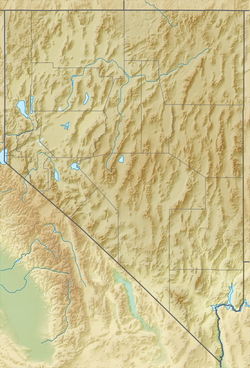| Hiller Mountains | |
|---|---|
| Highest point | |
| Elevation | 659 m (2,162 ft) |
| Coordinates | 36°2′28.950″N114°10′52.872″W / 36.04137500°N 114.18135333°W |
| Geography | |
| Country | United States |
| State | Nevada |
| District | Clark County |
| Topo map | USGS Hiller Mountains |
The Hiller Mountains are a mountain range in Clark County, Nevada. [1]
